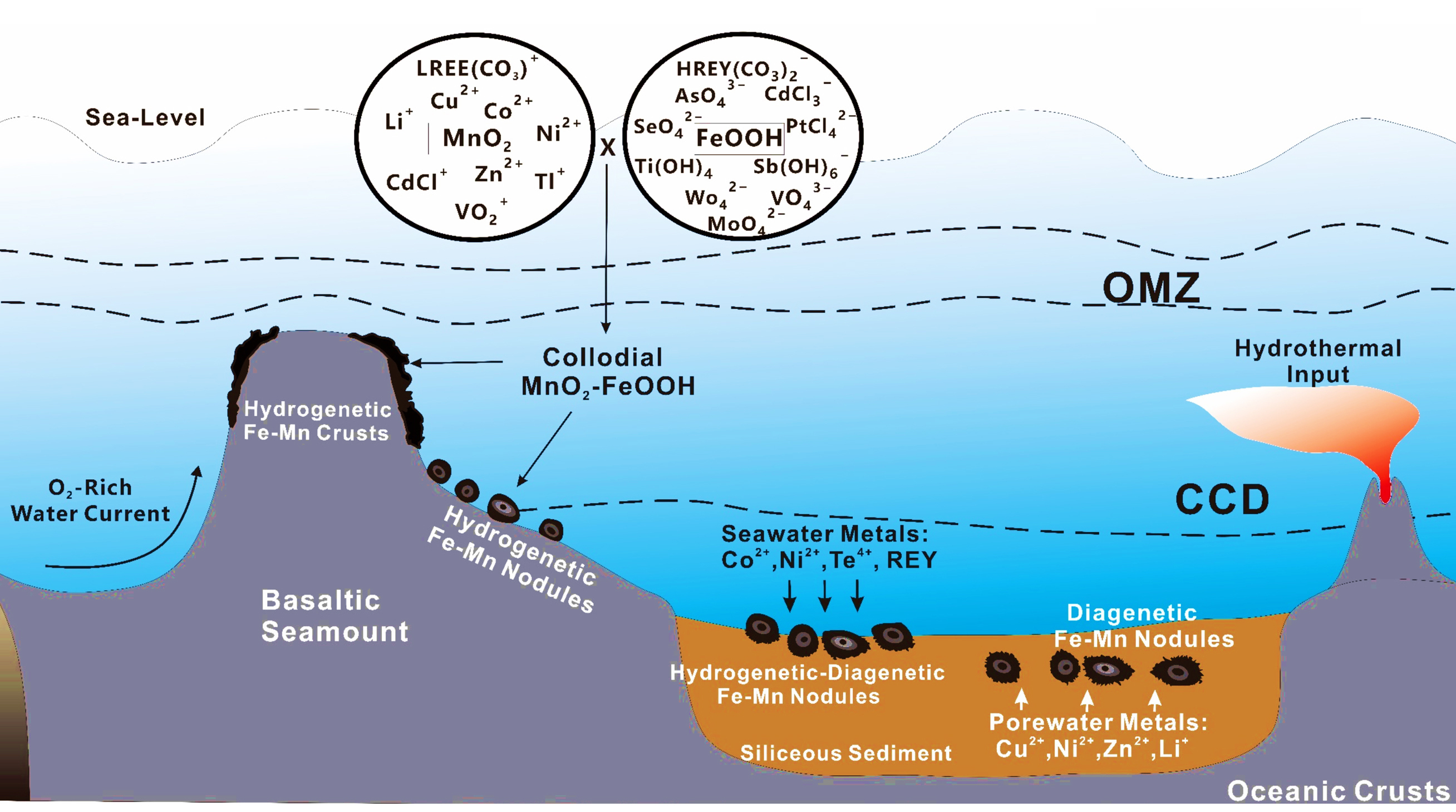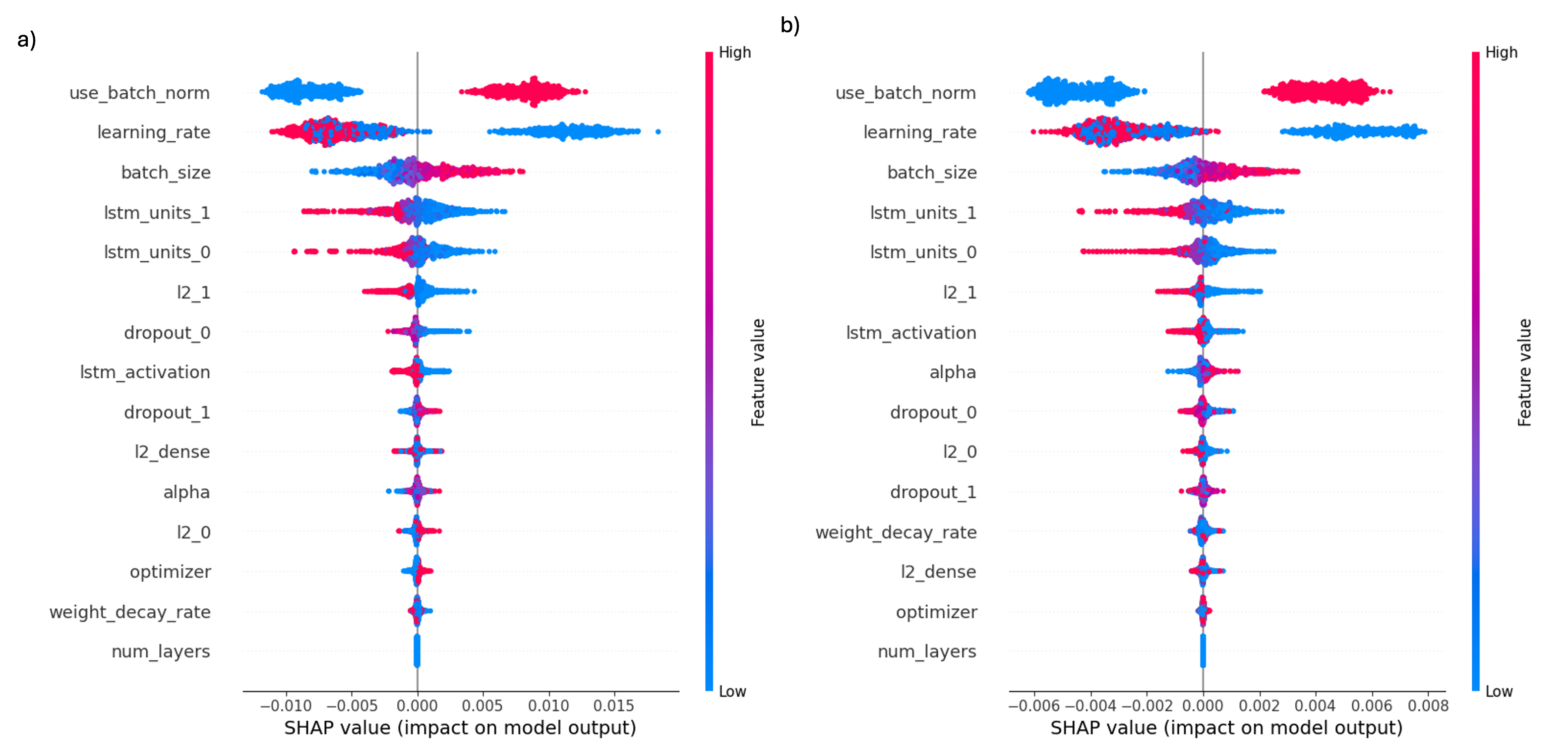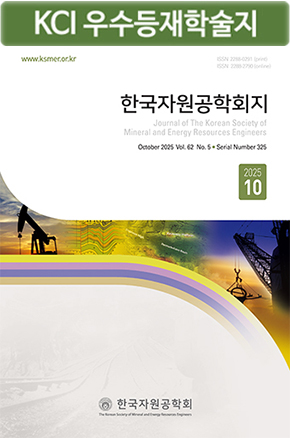-
Technical Report

-
Field Demonstrations of Electrocoagulation in Arsenic-Contaminated Water Treatment in South Korea and Vietnam
전기응집을 이용한 비소 오염수 처리 기술의 국내와 베트남 현장 실증 사례
-
Sangwoo Ji, Seungil Pak, Chamteut Oh
지상우, 박승일, 오참뜻
- This technical report reviews recent advances in electrocoagulation (EC) for use in arsenic removal and highlights field demonstrations in South Korea and …
본 기술보고문은 비소 제거를 위한 전기응집(Electrocoagulation, EC) 기술의 최근 동향과 국내와 베트남 현장 실증 사례를 정리하였다. Fe 전극 기반 EC는 단순한 장치 …
- This technical report reviews recent advances in electrocoagulation (EC) for use in arsenic removal and highlights field demonstrations in South Korea and Vietnam. Fe-based EC has emerged as a simple, cost-effective method that reliably realizes the World Health Organization (WHO) drinking water guideline of 10 µg/L. Improved processes, such as air-cathode EC and ultrasound oxidation, considerably accelerate the treatment rate. Field applications in South Korea, including the Geumjeong mine, Bonghwa, and naturally contaminated groundwater in Chungnam, confirmed that Fe-based EC consistently satisfied the WHO standard in mining effluent and naturally contaminated groundwater. In Vietnam, EC was applied at household and community scales, demonstrating stable operation and providing safe drinking water for tens to hundreds of residents. Coupling with solar power enabled reliable performances in areas with limited infrastructure. These demonstrations highlight the practicality and scalability of EC as a key technology for use in decentralized water treatment and safe water supply.
- COLLAPSE
본 기술보고문은 비소 제거를 위한 전기응집(Electrocoagulation, EC) 기술의 최근 동향과 국내와 베트남 현장 실증 사례를 정리하였다. Fe 전극 기반 EC는 단순한 장치 구조와 낮은 비용으로 WHO 음용수 기준(10 µg/L 이하)을 안정적으로 달성할 수 있는 기술로 주목받고 있으며, 공기 음극이나 초음파 산화 결합과 같은 개선된 공정의 도입으로 처리 속도가 더욱 향상되고 있다. 국내에서는 금정광산과 충남 지역 지하수에서 Fe 전극 기반 EC 실증이 수행되어 광산배수 및 자연기원 오염수 조건에서도 단일 공정으로 WHO 기준을 충족하는 성과를 거두었다. 베트남의 경우, 가정용 소형 장치와 마을 상수도 시스템에서 EC가 적용되어 수십~수백 명 규모 주민에게 안전한 식수를 안정적으로 공급할 수 있음을 보여주었다. 특히 태양광 전원과의 결합은 전력 인프라가 부족한 지역에서도 안정적인 운전 가능성을 확인하였으며, 현장 적용성, 경제성, 확장성 측면에서 EC 기술의 유망성을 입증하였다.
-
Field Demonstrations of Electrocoagulation in Arsenic-Contaminated Water Treatment in South Korea and Vietnam
-
Technical Report

-
Developing a Deterministic Geological Model of Deformation Zones Using Geophysical Data at the Forsmark Site in Sweden: A Case Study
물리탐사 자료를 이용한 스웨덴 Forsmark 부지 변형대의 결정론적 지질모델 작성 사례 연구
-
Hyoung-Seok Kwon, Manho Han, Seong Kon Lee, Seokhoon Oh
권형석, 한만호, 이성곤, 오석훈
- SKB conducted a detailed site investigation in the Forsmark area of Sweden, a candidate site for a deep repository for spent nuclear …
SKB사는 사용후핵연료 심층처분장 후보부지인 스웨덴 Forsmark 지역에서 3개 변형대의 분포를 파악하기 위하여 상세 부지조사를 수행하였다. 지질모델은 암반 영역 모델, 결정론적 변형대 모델과 …
- SKB conducted a detailed site investigation in the Forsmark area of Sweden, a candidate site for a deep repository for spent nuclear fuel, to determine the distribution of three deformation zones. The geological model consists of a rock domain model, a deterministic deformation zones model, and a statistical DFN model. The geological model was constructed using multiple geophysical techniques. Geophysical borehole surveys were conducted to identify the characteristics of the deformation zones and fractures adjacent to the boreholes. These results were used as input data for a statistical DFN model. Magnetic surveys were conducted to identify lineaments distributed near the site. Then, a deterministic geological model with steeply dipping deformation zones was developed. Reflection seismic surveys were conducted to image the reflectors of fractured zones distributed at a depth of 4 km. The survey results were then used to develop a deterministic geological model with gently dipping deformation zones.
- COLLAPSE
SKB사는 사용후핵연료 심층처분장 후보부지인 스웨덴 Forsmark 지역에서 3개 변형대의 분포를 파악하기 위하여 상세 부지조사를 수행하였다. 지질모델은 암반 영역 모델, 결정론적 변형대 모델과 통계적 이산단열망(DFN) 모델로 구성되며, 여러 물리탐사 기법을 적용하여 지질모델을 작성하였다. 시추공 물리탐사를 적용하여 시추공 인근에 분포하는 변형대 및 균열의 분포 특성을 파악하였으며, 통계적 DFN 모델을 입력자료로 활용하였다. 자력탐사를 적용하여 부지 인근에 분포하는 선구조를 파악하였으며, 급한 경사를 가진 결정론적 변형대 모델을 작성하였다. 반사법탐사를 적용하여 4 km 심도에 분포하는 파쇄대를 영상화하였으며, 완만한 경사를 가진 결정론적 변형대 모델을 작성하였다.
-
Developing a Deterministic Geological Model of Deformation Zones Using Geophysical Data at the Forsmark Site in Sweden: A Case Study
-
Technical Report

-
Enrichment Characteristics of Critical Metals in Deep-Sea Ferromanganese Crusts and Polymetallic Nodules
심해저 망간각과 망간단괴 내 핵심 금속들의 농축 특성
-
Woojoon Kee, Seungyeol Lee
기우준, 이승열
- Deep-sea ferromanganese crusts and polymetallic nodules are significant deep-sea resources enriched with critical metals such as Co, Ni, and rare earth elements, …
해저 망간각과 망간단괴는 Co, Ni, REE 등 핵심 원소들이 고농도로 집적된 중요한 심해저 자원으로, 전략적 가치가 높다. 본 연구는 이러한 금속 농축의 …
- Deep-sea ferromanganese crusts and polymetallic nodules are significant deep-sea resources enriched with critical metals such as Co, Ni, and rare earth elements, whose strategic importance continues to rise. This paper reviews the existing literature to clarify the geochemical factors and adsorption mechanisms controlling critical-metal enrichment. Metal accumulation is caused by a combination of macroscale factors such as the growth rate, water depth, and phosphatization. Microscale factors include the electrochemical properties and microstructures of Fe-Mn oxides. The key mechanisms include ion adsorption, which is determined by the surface charge, along with oxidative scavenging, redistribution during phosphatization, and structural incorporation within Mn oxide frameworks. Samples from the Magellan Seamounts show patterns consistent with these processes and exhibit relatively high concentrations of Co, Ni, Y, and Te compared with the reported global averages, potentially indicating significant resources. Future work will utilize synchrotron radiation and transmission electron microscopy to investigate the enrichment processes, focusing on the Magellan crusts as promising targets for sustainable exploration.
- COLLAPSE
해저 망간각과 망간단괴는 Co, Ni, REE 등 핵심 원소들이 고농도로 집적된 중요한 심해저 자원으로, 전략적 가치가 높다. 본 연구는 이러한 금속 농축의 지구화학적 요인과 원자 단위 흡착 메커니즘을 규명하기 위해 기존 문헌을 분석하고, 서태평양 마젤란 해산군의 망간각 시료의 특성과 비교하였다. 금속 농축은 성장률, 수심, 인산염화 등 거시적 환경 요인과 철-망간 산화물의 전기화학적 특성 및 미세구조 같은 미시적 요인이 복합적으로 작용한 결과이다. 주요 메커니즘은 (1) 광물 표면 전하에 따른 이온 흡착, (2) 산화적 치환을 통한 구조 내 통합, (3) 인산염화 과정에서의 금속 재분배, (4) 산화망간 광물의 층간 공간이나 터널 구조 내에서 일어나는 구조적 결합으로 요약된다.연구 대상 시료는 이러한 기작과 부합하는 특징을 보였으며, 전 지구적 평균과의 비교에서 Co, Ni, Y, Te 함량이 상대적으로 높아 독자적 자원 잠재력을 시사한다. 향후 방사광가속기와 투과전자현미경을 활용해 금속 농축 메커니즘을 정밀하게 규명할 계획이며, 특히 마젤란 해산군의 망간각은 유망한 잠재 자원으로서 후속 연구가 요구된다.
-
Enrichment Characteristics of Critical Metals in Deep-Sea Ferromanganese Crusts and Polymetallic Nodules
-
Review

-
Suggestions for Structure, Flow Configuration and Baffle Design to Increase Treatment Efficiency of Settling Ponds, Oxidation Ponds, and Media Reactors for Mine Drainage Treatment
광산배수 처리 침전조, 산화조 및 매질반응조의 효율 증대를 위한 구조, 유로 및 배플 설계 방안 제언
-
Duk-Min Kim
김덕민
- This review summarizes research findings aimed at improving the treatment efficiency of rectangular settling tanks, which are widely used in various water …
본 해설에서는 광산배수 처리시설을 비롯하여 다양한 수처리시설에 널리 적용되는 장방형 침전조의 처리 효율을 향상시키기 위한 연구 결과들을 종합하여 상부 배플의 적용 방안 …
- This review summarizes research findings aimed at improving the treatment efficiency of rectangular settling tanks, which are widely used in various water treatment facilities, including mine drainage treatment systems. It provides design options for applying hanging baffles and demonstrates that the zigzag baffles are highly applicable in oxidation tanks. Longitudinal installation of the baffles provides greater efficiency compared to transverse installation. Furthermore, this study demonstrates that when gravity flow is required in media reactors, a wide area and vertical flow in the form of the Successive Alkalinity Producing System (SAPS) are necessary. Nevertheless, when pumping is employed, the possibility arises of applying a broader range of structural configurations.
- COLLAPSE
본 해설에서는 광산배수 처리시설을 비롯하여 다양한 수처리시설에 널리 적용되는 장방형 침전조의 처리 효율을 향상시키기 위한 연구 결과들을 종합하여 상부 배플의 적용 방안 등을 제시하였다. 그리고 산화조에서 지그재그형 배플의 적용성이 높은 것과 해당 배플을 종방향으로 설치하는 경우 횡방향 설치 대비 증가하는 효율을 제시하였다. 한편, 다양한 매질반응조에서는 자연유하가 필요한 경우 공통적으로 SAPS 형태의 넓은 면적과 수직흐름이 필요하다는 연구 결과를 제시하고, 그럼에도 불구하고 펌프가 적용되는 경우 다양한 구조를 적용할 수 있는 가능성을 나타내었다.
-
Suggestions for Structure, Flow Configuration and Baffle Design to Increase Treatment Efficiency of Settling Ponds, Oxidation Ponds, and Media Reactors for Mine Drainage Treatment
-
Review

-
Review of UAV–AI-Based Automated Visual Inspection Technologies and Their Applicability to High-Risk Construction Machinery
무인항공기와 인공지능 기반 자동 외관 검사 기술의 현황과 고위험 건설기계 적용 가능성
-
Hojun Yang, Seungdo Kim, Yosoon Choi
양호준, 김성도, 최요순
- Unmanned aerial vehicles (UAVs) combined with artificial intelligence (AI) have recently emerged as effective tools for automating safety inspections in hazardous and …
최근 무인항공기(UAV)는 사람이 접근하기 어렵거나 위험한 산업 현장에서의 안전 점검 수단으로 활발히 활용되고 있다. UAV에 장착된 센서와 인공지능(AI) 기술의 발전은 안전 점검의 …
- Unmanned aerial vehicles (UAVs) combined with artificial intelligence (AI) have recently emerged as effective tools for automating safety inspections in hazardous and hard-to-reach industrial environments. UAV–AI-based automated visual inspection technologies have been widely applied to infrastructure such as bridges, towers, and port facilities to detect, segment, and classify surface defects. However, their application to high-risk construction machinery remains limited, and few review studies have addressed this gap. This study provides a comprehensive review of existing UAV–AI inspection technologies and evaluates their applicability to heavy construction equipment such as tower cranes and pile drivers. The findings aim to establish a conceptual foundation for future research and offer strategic insights into the development of intelligent, real-time, and automated inspection systems suitable for complex and high-risk construction environments.
- COLLAPSE
최근 무인항공기(UAV)는 사람이 접근하기 어렵거나 위험한 산업 현장에서의 안전 점검 수단으로 활발히 활용되고 있다. UAV에 장착된 센서와 인공지능(AI) 기술의 발전은 안전 점검의 자동화를 가능하게 하여 기존 인력 의존형 점검 방식보다 효율적인 대안으로 주목받고 있다. 지난 10여 년간 교량, 송전탑, 통신탑, 항만 시설 등을 대상으로 UAV–AI 기반 자동 외관 검사 기술이 활발히 연구되었으며, 손상 탐지(detection), 손상 범위 분할(segmentation), 손상 유형 분류(classification) 등 다양한 목적에 적용되어 왔다. 그러나 고위험 건설기계를 대상으로 한 연구는 아직 부족하며, 이를 체계적으로 종합한 문헌 리뷰도 드물다. 본 논문은 기존 UAV–AI 기반 외관 검사 기술을 종합적으로 고찰하고, 이를 타워크레인, 항타기 등 고위험 대형 건설장비에 적용하기 위한 기초적 분석 틀을 제시한다. 이를 통해 향후 고위험 건설기계에 적합한 자동 점검 기술 개발의 전략적 방향을 모색하고자 한다.
-
Review of UAV–AI-Based Automated Visual Inspection Technologies and Their Applicability to High-Risk Construction Machinery
-
Review

-
Natural Hydrogen Research in Korea: Field Measurements
국내 자연수소 연구: 현장측정
-
Tae-Gook Lee, Lyangkyu Lee, Oukwang Kwon
이태국, 이량규, 권오광
- Natural hydrogen is defined as clean hydrogen generated by various mechanisms within the Earth. Its potential role is attracting attention in line …
자연수소는 지구 내부에서 다양한 기작에 의해 발생하는 청정수소로 정의되고, 정부의 에너지 전환, 탈탄소 정책 및 청정에너지 확대 전략에 따라, 미래 신에너지자원으로서의 잠재적 …
- Natural hydrogen is defined as clean hydrogen generated by various mechanisms within the Earth. Its potential role is attracting attention in line with the global energy transition to renewables and government carbon neutrality policies. Although there is considerable interest in the Republic of Korea, most work has been limited to case studies. The Korea National Oil Corporation began on-site measurement using portable equipment in 2023. Artificial hydrogen in soil measurements, caused by excavation with a hammer drill, lasted several hours or up to several days, and the hydrogen concentrations eventually dropped to zero. In contrast, several hot spring wells, which are not affected by such artificial factors, consistently had concentrations of 69 to 414 ppm. It is presumed that there is a relationship between natural hydrogen concentrations and ultramafic rock bodies, iron ore deposits, and uranium deposits. In subsequent research, gas analysis at greater depths, regional system studies, and geophysical exploration should be conducted.
- COLLAPSE
자연수소는 지구 내부에서 다양한 기작에 의해 발생하는 청정수소로 정의되고, 정부의 에너지 전환, 탈탄소 정책 및 청정에너지 확대 전략에 따라, 미래 신에너지자원으로서의 잠재적 역할이 주목받고 있다. 하지만, 자연수소는 아직까지 미개척 분야로서 기술적, 경제적 타당성에 대한 명확한 자료가 부족하고, 국내에서도 자연수소 관심은 많지만 해외사례 검토에 국한되어 현장 연구는 드문 실정이다. 이에 한국석유공사에서는 공공데이터를 활용하여 현장 측정지점을 선정하였고, 2023년부터 휴대용 측정장비로 수소측정을 진행하였다. 지표 토양 측정에서는 해머드릴 굴착에 의한 인위적인 수소가 수시간~수일간 지속되었고 일주일이상 장기측정시 0에 수렴하였다. 지하수 관측공과 온천수 취수공은 인위적인 효과가 없었고, 일부 심부 온천수 취수공에서 69~414ppm까지 지속적으로 측정되었다. 인근 암상 및 광상 등을 고려하였을 때 초고철질암체, 철광상, 우라늄광상 등의 분포와 연관성이 있다고 추정된다. 향후, 고심도에서의 추가 가스샘플 분석과 수소시스템에 대한 연구 및 정밀 지구물리탐사 등의 작업이 고려되어야 한다.
-
Natural Hydrogen Research in Korea: Field Measurements
-
General Remarks

-
Evaluating LSTM-Based Surrogate Models for Predicting Productivity at UBGH2-6 Gas-Hydrate Site
LSTM 기반 대리모델을 이용한 UBGH2-6 가스 하이드레이트 사이트 생산성 예측 평가
-
Seunghwan Baek, Jihoon Kim
백승환, 김지훈
- Data-driven, site-specific surrogate models are developed to enable rapid and accurate prediction of gas and water production at the UBGH2-6 gas-hydrate site. …
본 연구에서는 UBGH2-6 가스 하이드레이트 사이트에서 가스 및 물 생산을 신속하고 정확하게 예측하기 위한 데이터 기반 현장 맞춤형 대리모델들을 개발하였다. 다양한 감압 …
- Data-driven, site-specific surrogate models are developed to enable rapid and accurate prediction of gas and water production at the UBGH2-6 gas-hydrate site. Synthetic datasets are generated under various depressurization scenarios. Considering the high computational cost and time requirements of full-physics simulations, long short-term memory (LSTM) networks are employed as surrogate models to efficiently approximate production behavior. LSTM surrogate models per phase (water and gas) are trained on datasets of differing sizes—basic and expanded—with the expanded dataset encompassing a broader range of operational conditions. Water-production predictions are highly accurate even under limited input features, whereas gas-production predictions improve significantly when trained on the expanded dataset. Sensitivity analyses highlight critical architectural components, including batch normalization, learning rate, and batch size, as key drivers of model performance. These findings indicate that LSTM-based surrogates are a computationally efficient and reliable alternative to conventional full-physics simulations for forecasting production in complex gas-hydrate reservoirs.
- COLLAPSE
본 연구에서는 UBGH2-6 가스 하이드레이트 사이트에서 가스 및 물 생산을 신속하고 정확하게 예측하기 위한 데이터 기반 현장 맞춤형 대리모델들을 개발하였다. 다양한 감압 시나리오 하에서 합성 데이터 세트를 생성하였으며, 전물리 시뮬레이션의 높은 계산 비용과 시간 소요를 고려하여 장·단기 메모리(LSTM) 신경망을 대리모델로 활용하였다. 상(phase)별(물, 가스) LSTM 대리모델은 기본 및 확장 데이터 세트를 이용해 학습되었으며, 확장 데이터 세트는 보다 넓은 운전 조건 범위를 포함한다. 입력 변수의 제약이 존재함에도 불구하고 물 생산 예측은 매우 높은 정확도를 보였으며, 가스 생산 예측은 확장 데이터 세트으로 학습 시 유의미하게 향상되었다. 민감도 분석 결과, 배치 정규화, 학습률, 배치 크기 등 주요 모델 구조 요소들이 성능 향상의 핵심 요인으로 확인되었다. 이러한 결과는 LSTM 기반 대리모델이 복잡한 가스 하이드레이트 저류층의 생산 예측을 위해 기존 전물리 시뮬레이션보다 계산 효율적이고 신뢰할 수 있는 대안임을 보여준다.
-
Evaluating LSTM-Based Surrogate Models for Predicting Productivity at UBGH2-6 Gas-Hydrate Site
Journal Informaiton
 Journal of the Korean Society of Mineral and Energy Resources Engineers
Journal of the Korean Society of Mineral and Energy Resources Engineers
Journal Informaiton
Journal Informaiton - close
 Journal of the Korean Society of Mineral and Energy Resources Engineers
Journal of the Korean Society of Mineral and Energy Resources Engineers
- About This Journal
- Editorial Board
- Instructions for Authors
- Submission Guidelines
- Review Guidelines
- Code of Research Ethics
- Guidelines for Best Paper Award











